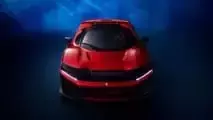


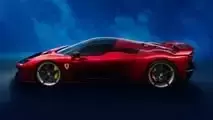
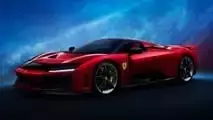
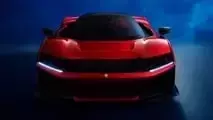

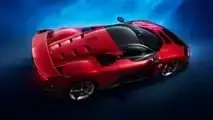


Ferrari's recent unveiling of the F80 supercar, powered by a V-6 engine, has sparked considerable discussion, especially given the brand's long-standing association with the formidable V-12. This strategic shift, explained at a technical workshop in Modena, highlights a new direction for the iconic marque, prioritizing cutting-edge performance and efficiency derived from racing technology. Despite the F80's departure from the V-12 tradition, Ferrari remains committed to a diverse powertrain future, including V-8s, V-12s, hybrids, and electric vehicles, aiming for a balanced portfolio by the end of the decade.
Ferrari Embraces V-6 Power for the F80 Supercar
In a pivotal decision at a technical workshop held on November 19 in the historic Museo Enzo Ferrari in Modena, Italy, the esteemed supercar manufacturer, Ferrari, officially detailed its choice to equip the groundbreaking F80 supercar with a compact, turbocharged V-6 engine, diverging from its celebrated V-12 legacy. This move comes shortly after the marque reaffirmed its commitment to the V-12 by naming the 812 Superfast's successor the '12Cilindri,' emphasizing its rich heritage. However, for the F80, Ferrari's technical experts underscored that the transition to a V-6 with forced induction was not only straightforward but also offered significant performance advantages.
Matteo Turconi, Ferrari's Senior Product Marketing Manager, articulated the company's rationale, stating, 'We considered whether the new supercar should feature our most iconic engine, the V-12, or leverage the pinnacle of racing technology for ultimate performance.' He concluded that the latter, a turbocharged V-6 combined with a hybrid system, represented the superior path. Turconi confidently asserted the V-6's superiority, backed by compelling data. The 3.0-liter V-6 unit, a direct descendant of the potent 499P endurance race car engine, boasts an extraordinary output of 300 horsepower per liter. Beyond its raw power, its compact dimensions facilitate a shorter wheelbase and a substantial reduction in overall weight. Paolo Valenti, Team Leader for the Pilot Product Line, revealed that this innovative V-6 is affectionately dubbed 'the big engine' within Maranello. Furthermore, the smaller footprint of the V-6 engine significantly enhances aerodynamic efficiency, allowing for an extended diffuser of 1.8 meters, thereby optimizing the vehicle's handling and speed capabilities.
Despite the initial surprise among purists, Ferrari points to historical precedents like the V-8 powered 288 GTO and F40, noting their enduring appeal. The market's reception of the F80 has been overwhelmingly positive, with all 799 units already pre-sold, underscoring the success of this innovative direction. Looking ahead, while an electric Ferrari is on the horizon, the company reiterates its ongoing investment in traditional combustion engines—including V-6s, V-8s, and V-12s. By the close of the decade, Ferrari anticipates that pure internal combustion engine models will constitute 40 percent of its lineup, with hybrids accounting for another 40 percent, and fully electric vehicles making up the remaining 20 percent.
Ferrari's strategic embrace of the V-6 engine for its F80 supercar is a testament to the brand's forward-thinking approach, balancing its storied heritage with an relentless pursuit of innovation. This move signals a significant evolution in automotive engineering, proving that progress can redefine perceptions of power and performance. It challenges enthusiasts to reconsider traditional notions of what constitutes a 'true' Ferrari, demonstrating that technological advancement, born from the crucible of racing, can indeed lead to a superior driving experience. The F80 stands as a brilliant example of how embracing efficiency and advanced engineering can yield exceptional results, setting a new benchmark for supercars and paving the way for a dynamic and diversified future for Ferrari.
